As spring draws to an end and summer officially gets underway, Spain’s popularity as a holiday destination only increases. The chances of rain disappear, the hours of sunshine lengthen, the temperatures rise but are still pleasant enough for walking and exploring, and the summer crowds and prices have yet to reach their peak.
Plus, June is a month packed with festivals! The calendar is bursting with unique events, cultural and traditional celebrations, and endless reasons to party. In short, June is the perfect month for a holiday in Spain.
To help you plan your trip and decide what not to miss, we’ve compiled this list of the top 10 things to do in June in Spain. It’s an enticing mix of activities, sights, and adventures across the country. So, let’s get started!
- Celebrate the Solstice, Spanish style
- Beat the heat at the beach
- Be a wine warrior
- Experience a traditional festival
- Ride the waves
- Head to a music festival
- Get your hiking boots on
- Show your Pride!
- Visit the old west
- Explore on four wheels
First things first: What’s the weather doing?
June in Spain is the beginning of summer, and temperatures average around 21°C to 25°C. Barcelona and the north can be a little cooler, while Andalusia and Madrid occasionally reach the high 20s.
Rain is rare after the first week of June, and sunshine is abundant, with 11 to 13 hours of sun daily. Overall, it’s the perfect weather for walking, exploring towns and cities, hitting the beaches, and plunging into sparkling seas.
Ready to start planning your trip? Don’t miss these fantastic activities and events.
Celebrate the Solstice, Spanish style
One of the most fantastic celebrations in June is the Feast of Saint Joan. Held on the summer solstice (23rd of June in Spain) to celebrate the birthdate of Saint John the Baptist, this Christian festival has a decidedly pagan feel to it.
Also known as the Nit del Foc, or Night of Fire, Sant Joan sees friends and families building bonfires and setting off fireworks to celebrate the summer and the triumph of light over darkness. It’s also a chance to see the uniquely Spanish tradition of correfoc, or fire runs, when locals dress up as demons to parade and dance through the streets waving flaming torches, and giant mounted sparklers. It’s an eerie and fascinating sight that you won’t soon forget!
You’ll find Sant Joan celebrations happening all over Spain, but the festivities are most famous in Catalonia and Andalusia, and the coastal parties are the best. There’s something magical about spending the summer solstice on a beach beside a campfire with a background of live music, dancing, and free-flowing food and wine!
Don’t be surprised if you see people leaping over their campfires, it’s a ritual for good luck, so why not give it a go?
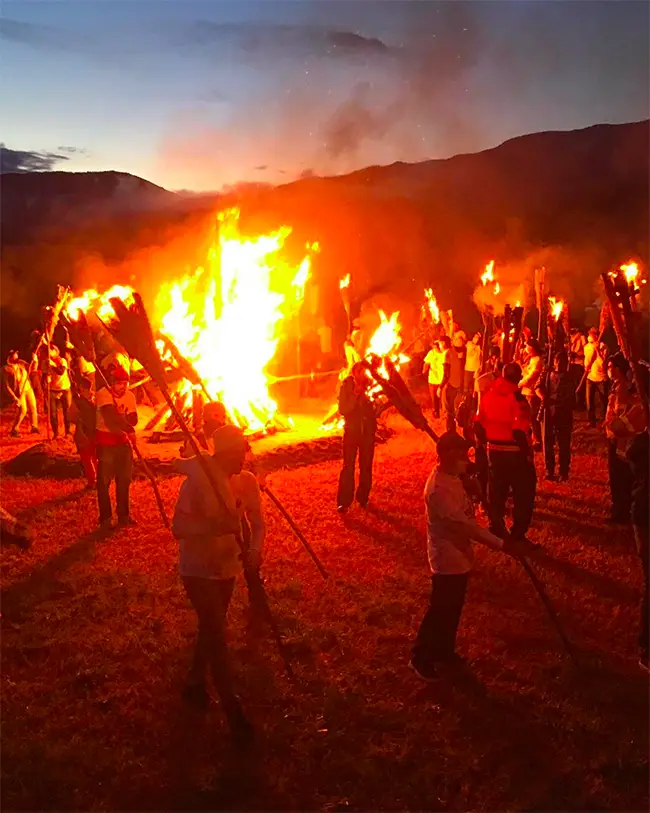


Beat the heat at the beach
Obviously, one of the best things to do in Spain in June is to hit the beach! It’s an absolute must, as the conditions are perfect for beach days, sunbathing, and swimming.
June is also your last chance to hit a few of Spain’s top beach spots before they get too hot. Temperatures on the Costa del Sol can regularly hit the high thirties in July and August, which is too much for some people. Especially when the infamous Terral arrives, these warm winds from the mountains can push the temperatures over 40 degrees and make the air feel like an oven. So, for more manageable temperatures, head there in June.
This is also your last chance to beat the summer crowds. Some of the busiest beaches in Spain are Benirrás Beach in Ibiza, Magaluf Beach in Mallorca, Zurriola Beach in San Sebastian, Samil Beach in Galicia and Barceloneta, the most famous of Barcelona’s string of beaches. So, take your last opportunity to visit these popular spots while you can still get a space on the sand.
Or, if you’d rather be somewhere a little more peaceful, no problem. The joy of Spain’s extensive coastline is that there’s a beach for every taste! Take a stroll or drive away from the most famous beaches, and you’ll soon come across quieter stretches of sand and lesser-known coves.

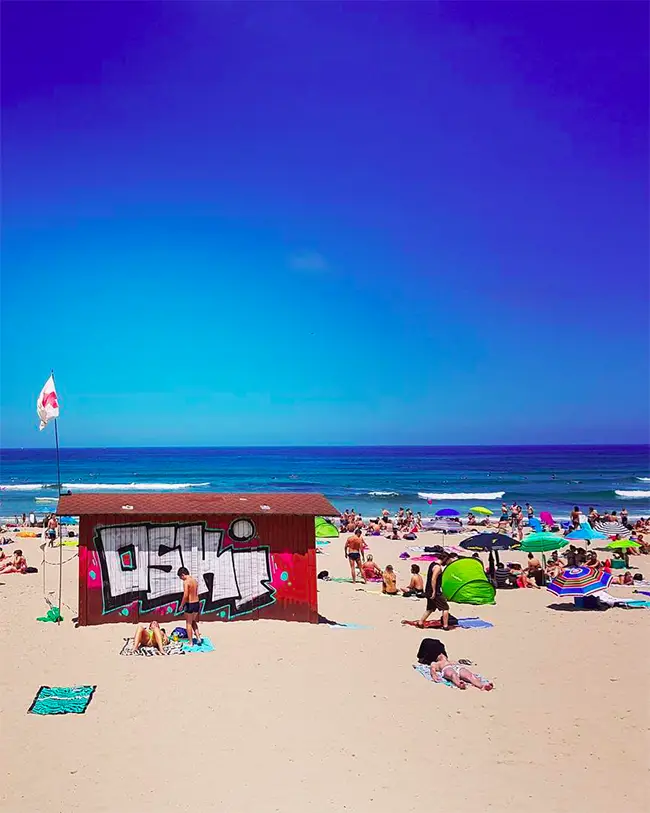
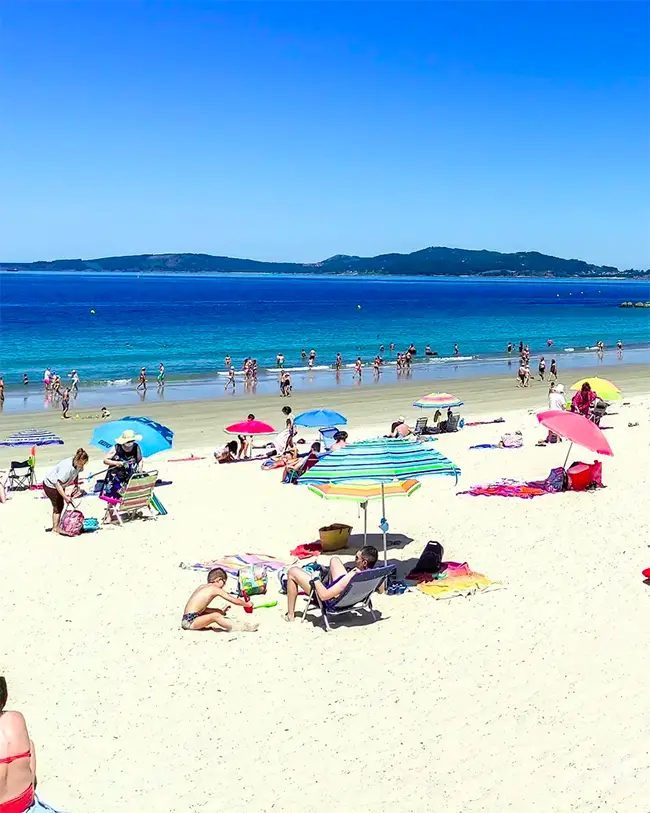
Be a wine warrior
La Rioja is one of the finest wine-growing regions in Spain and is well worth a visit at any time of the year. But those who visit between June 28th and 30th are in for an extra special (and extra messy) time! The Haro Wine Festival is an incredible event that sees locals and visitors alike engaging in a no-holds-barred wine fight.
The Batalla del Vino is a chaotic affair in the hills beside this unassuming town. Thousands of people arrive, dressed head to foot in white, and proceed to douse each other with wine thrown from buckets, poured from jugs, and even shot from water pistols.
The Wine Battle is part of a larger wine festival that dates back to the 13th century and celebrates the region’s wine-making prowess. It features food, drinks (including wine for drinking, not throwing), music, and cultural shows, but let’s be honest – we’re mostly going for the chance to chuck wine over our friends!
This is sure to be an event you remember forever!
☀️ Why not book a hotel in Haro and join in the Batalla del Vino?
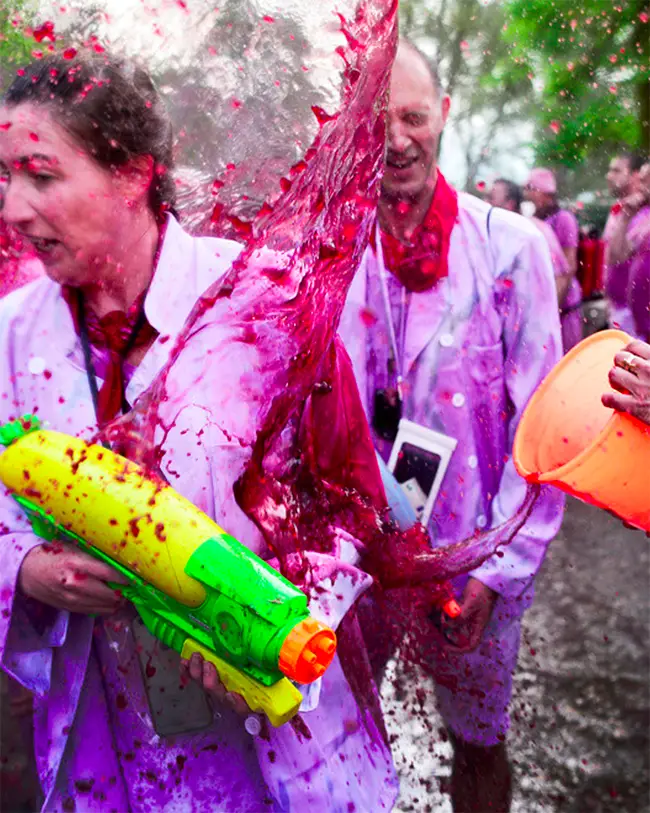
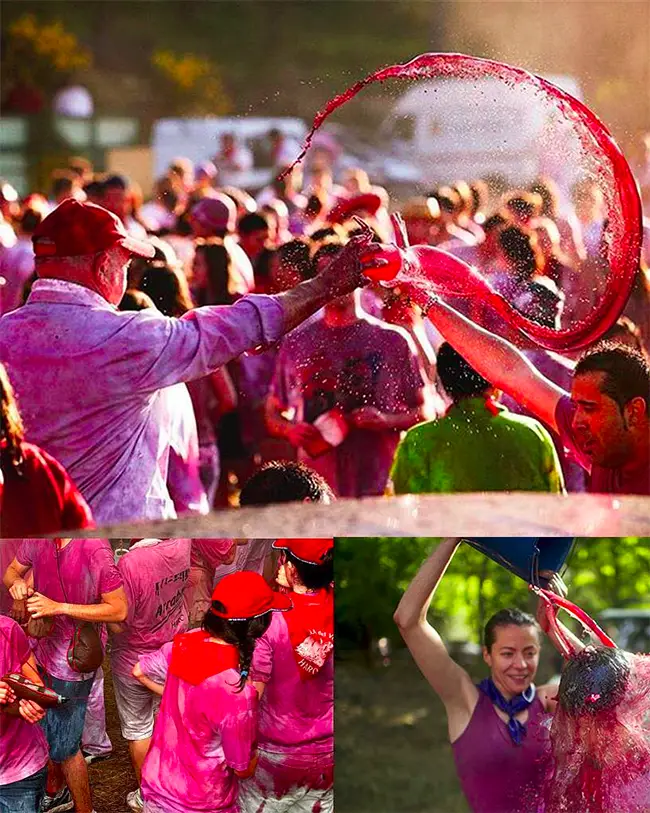

Experience a traditional festival
The Corpus Christi festival occurs 60 days after Easter on Eucharist, typically falling within June. It commemorates the institution of the Eucharist (the act of communion with Jesus). While that may sound solemn, this event, like most things in Spain, is celebrated with music, dancing, good food, wine, and street parties.
The celebrations take different forms throughout Spain but typically include a parade of local dignitaries, military and religious figures, and often large effigies and statues. The parade can last several hours, winding through streets decorated with carpets of petals, cut grass, tapestries, or intricate patterns made from coloured sawdust.
Many towns also host concerts and street parties to mark the occasion. Some of the most beautiful and intricate celebrations occur in Seville, Tenerife, and Toledo. Granada combines Corpus Christi with its annual fair, making it one of the year’s biggest events, filled with flamenco dancing, songs, dance, food and drink.
For a unique twist on Corpus Christi, head to Berga in Catalonia. This small town on the outskirts of Barcelona has become known for its La Patum de Berga festival. This Catalan folk event once celebrated the summer solstice but has now merged with the Corpus Christi festivities. From June 19th to 23rd, the festival showcases Catalan music, food and traditions, including fire dancing parades and giant paper-mâché puppets steeped in Spanish symbolism. It’s a fantastic chance to attend a festival named an event of Intangible Cultural Heritage by UNESCO.
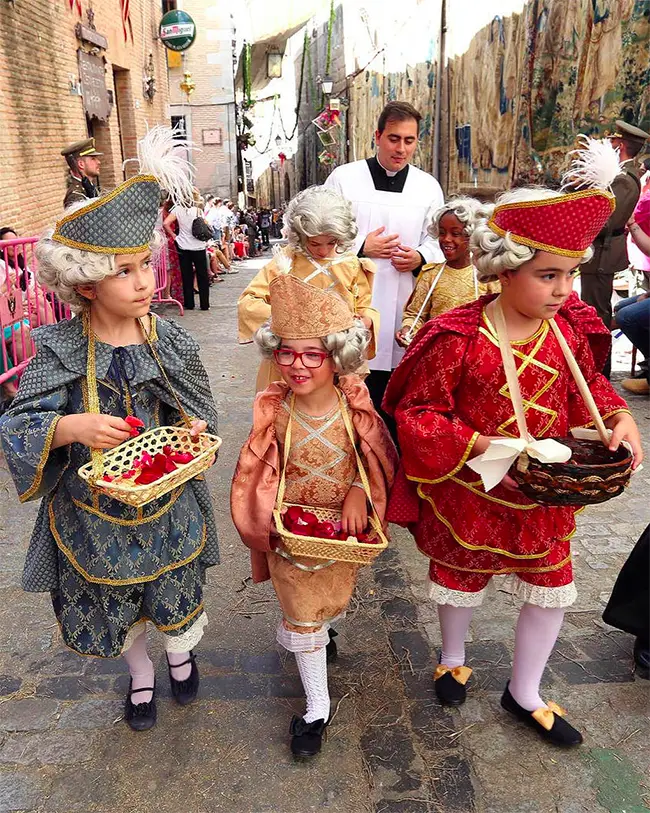
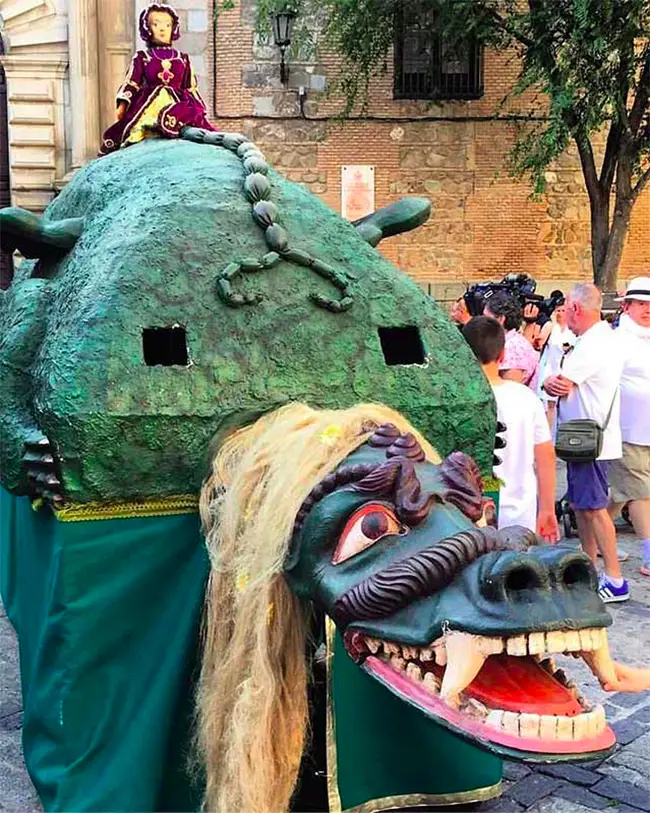
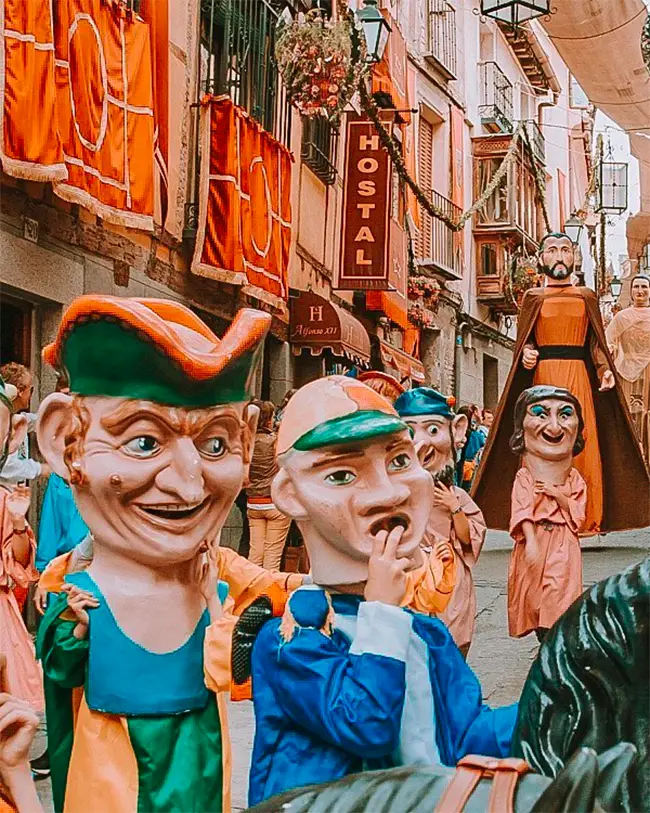
Ride the waves
For many people June is the first month of the year when temperatures are hot enough to tempt them into the sea, so June is when the watersports season really gets started across Spain.
It makes sense that a country with a coastline this long and access to two oceans would excel at water sports, so you have nearly endless choices of where to go to hit the waves. The entire north coast is a magnet for surfers, and with good reason. You’ve got San Sebastian, which attracts surfers in droves and has plenty of surf bars and cafes to help you really embrace the lifestyle. Santander is where beginners can surf throughout the summer, and Galicia attracts everyone from pros to novices thanks to its range of breaks and beaches for all abilities.
Down south, intermediate and advanced surfers can hit up Cadiz on Andalusia’s Atlantic coast, while both Malaga and Marbella have beginner-friendly waves and surf schools. Ideal for adding a few surf lessons to your beach holiday. The Canary Islands also have great surfing, and Fuerteventura is probably the best for beginners. Plus, the water is often warmer there than in mainland Spain!
If you prefer your watersports to be wind-powered, head to Tarifa. This small town sits on a promontory in the Straights of Gibraltar and, thanks to near-constant crosswinds, is one of Europe’s premier windsurfing and kitesurfing destinations.
So grab a board and hit the ocean!



Head to a music festival
The Spanish events calendar is heaving with celebrations of religious occasions and saints days. But don’t worry if you like your parties a little more secular; June is the month for some of Spain’s best music festivals. Here are some of our favourites:
- Primavera Sound takes place in Barcelona in the last days of May and the first days of June. It’s a vast festival that attracts over 70,000 people per day. It showcases a diverse range of artists and genres across a whopping 16 stages and is an excellent way to start summer.
- Ibiza opening parties – most of the clubs in Ibiza will have opened their doors in May, but a few hang on until June to really get the party started. So head to the White Isle to join the last superclubs as they kickstart the summer!
- Sonar is one of the biggest electronic music festivals in Europe. It is known for showcasing cutting-edge technology and groundbreaking sounds.
- Mar i Jazz is a three-day jazz and fusion festival in Valencia. It has a wonderful, chilled vibe that’s great for families. Spanish and international acts perform, and there’s almost as big a focus on food as music. There are also plenty of stalls featuring work by local artists.
- Mallorca Live Festival – the biggest three day music festival on the Balearics with epic international headliners, including the Pet Shop Boys and Blondie in 2024.
Get your hiking boots on
June is a beautiful month for hiking as the spring rains have ended while the summer temperatures and crowds have not yet arrived. Spain is filled with hiking opportunities through a variety of breathtaking landscapes. Here are a few areas and trails to consider:
- Take a stroll through Spain’s original National Park, Picos de Europa, where you can explore the breathtaking Lakes of Covadonga and walk the famous Cares Trail alongside dramatic gorges and ravines.
- Experience the famous Camino de Santiago, a pilgrimage trail for over a thousand years. There are many different starting points and sections to this route, but the original start is from Oviedo in Asturias.
- If you’re in the Canary Islands, why not take a hike through Teide National Park in Tenerife to see otherworldly volcanic landscapes and the highest mountain in Spain?
- Fancy a multi-day hike? The GR 221 Dry Stone Way in Mallorca takes you through this Balearic Island’s mountainous landscape and pine forests from Port d’Andratx to the beach town of Port de Pollença. If you want to extend it, you can continue to Cap de Formentor for spectacular views.
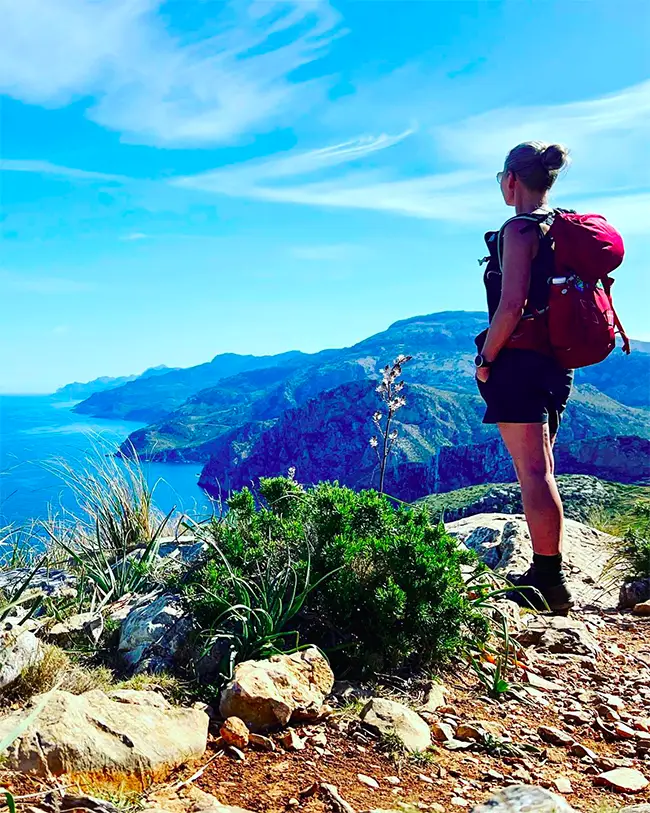

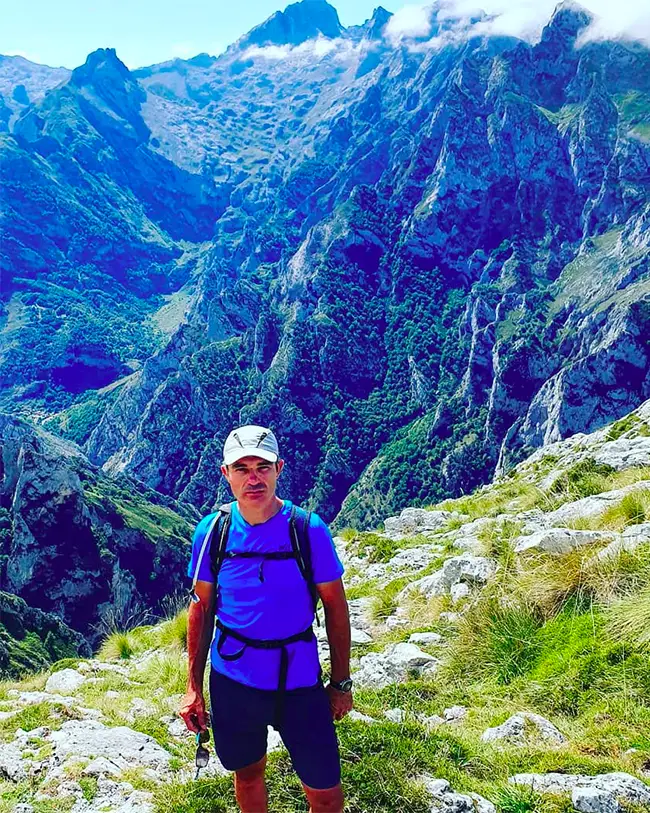
Show your Pride!
Spain is not only welcoming of LGBTQ+ culture but goes out of its way to celebrate it. This is evidenced by the sheer scale of the Pride events taking place annually across the country from May to September. June plays host to a fair few of them.
Madrid’s Pride (known as “Orgullo” in Spanish) kicks off at the end of June when the city bursts with rainbow flags and a schedule packed with diverse performances and events. Spain’s capital is world-renowned for having one of the biggest Pride Parades in the world and, more locally, is known for its annual High Heel Race!
Barcelona Pride’s festivities are almost as impressive and occur either at the end of June or at the start of July. Pride Ibiza attracts a cosmopolitan, international crowd and involves some extreme partying. But, if you want the surprising best spot for Pride in Spain, head to Sitges. This little beach town neighbouring Barcelona is the unofficial LGBTQ+ capital of Spain.
The best part is that all these events are staggered, so if you can’t choose which to attend, why not do a Spanish Pride tour and catch them all?



Visit the old west
For a truly unique spectacle during your time in Spain, try to catch the Romeria de El Rocio in Andalusia. Held annually in southern Spain, this 800-year-old event sees many thousands of people make a pilgrimage to El Rocio in the Huelva province to pay their respects to the Virgen del Rocio.
The pilgrims travel by foot or by horse, singing folk songs and dancing as they travel. They dress in traditional Andalusian attire, with the women in flamenco dresses, the men in short jackets and bolero hats, and the horses and carts colourfully adorned with flowers. Some people arrive in old-fashioned covered wagons, which will make you feel like you’ve stepped back in time or onto the set of a Western.
The town of El Rocio is the perfect setting for this because this quirky place has no real paved roads, just sandy streets and characterful buildings complete with wooden railings serving as hitching posts for horses.
The pilgrimage is a fascinating spectacle. It takes place on Pentecost, 50 days after Easter, so the date changes each year, but it’s usually in June. Even if you miss the pilgrimage, the dusty, quirky cowboy town of El Rocio is well worth a visit at other times of the year.
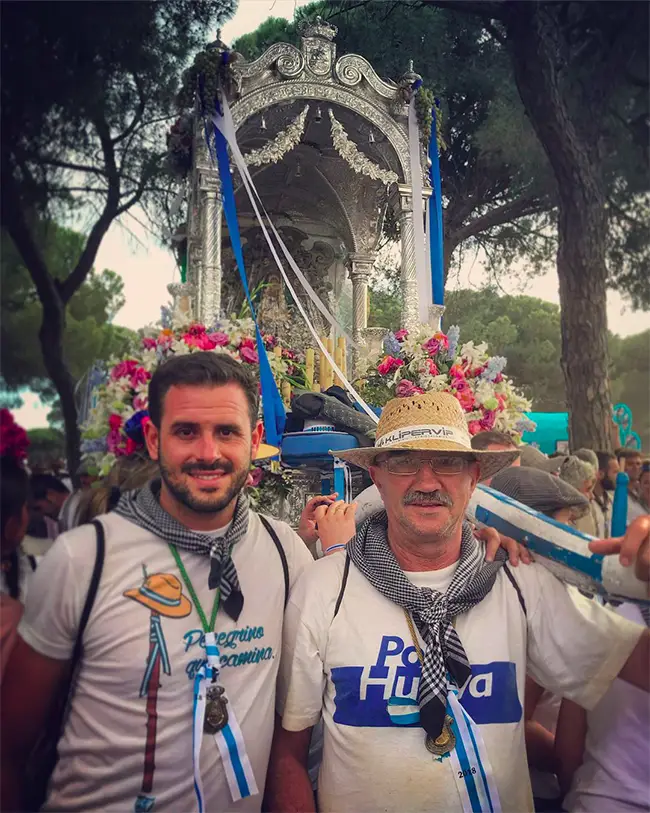
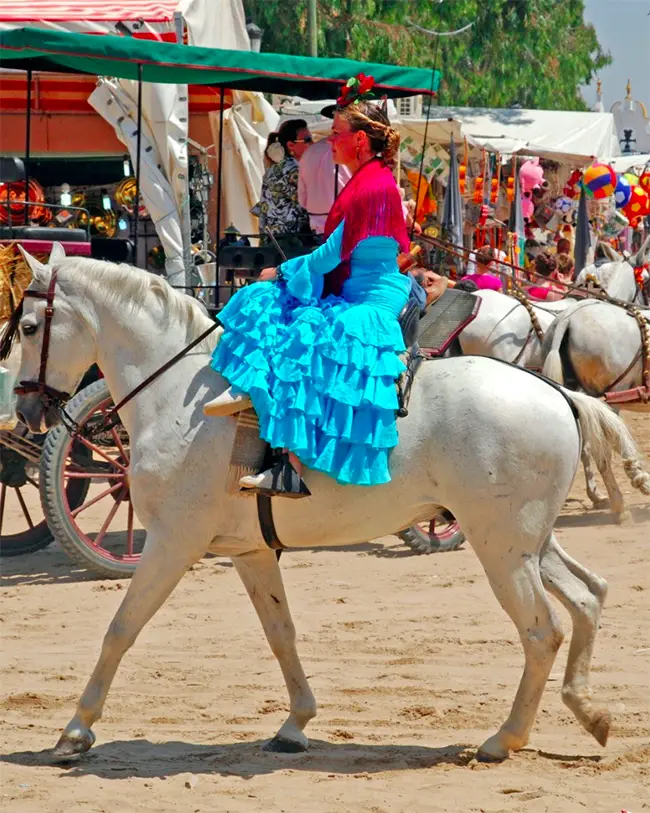
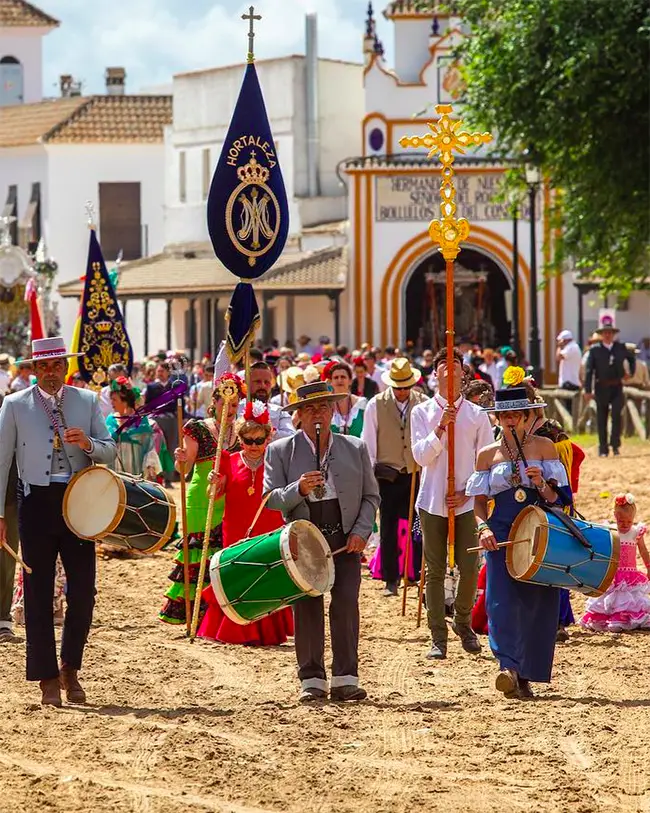
Explore on four wheels
Why not make the most of June’s perfect beach weather by visiting as many beaches and seaside towns as possible on a road trip along one of the country’s spectacular stretches of coastline? Here are some itineraries to consider:
- Costa Brava: This stretch of stunning Catalan coastline was just built for road-tripping. Cruise along coastal roads, stopping at every stunning beach and quaint village you come across. Start your trip with a few days exploring Barcelona and end up in Cadaques, the former home of Salvador Dali.
- Valencia and Costa Blanca: Spend a few days soaking up the vibes in Valencia, then drive south, with dramatic mountains to your right and the sparkling Mediterranean to your left. Stop at laid-back Denia, then cruise down the Costa Blanca through charming Altea, infamous Benidorm, and lively Alicante to finish up in historic Cartagena.
- Andalusia and Costa del Sol: Start in world-famous Malaga, then cruise along the gorgeous beaches of the Costa del Sol to Tarifa on the Straights of Gibraltar. Turn north to travel alongside the Atlantic Ocean before stopping in ancient Cadiz, or continuing inland to finish with a day or two in Seville.
- North Coast: This coastline is often overlooked as sun seekers head to the Med, but it offers fantastic beaches, fascinating towns, abundant surf spots and stunning views. Start your trip in foodie paradise San Sebastian, then drive west through Cantabria and Asturias before arriving in Santiago de Compostela, the finish point of the famous Camino de Santiago pilgrimage.
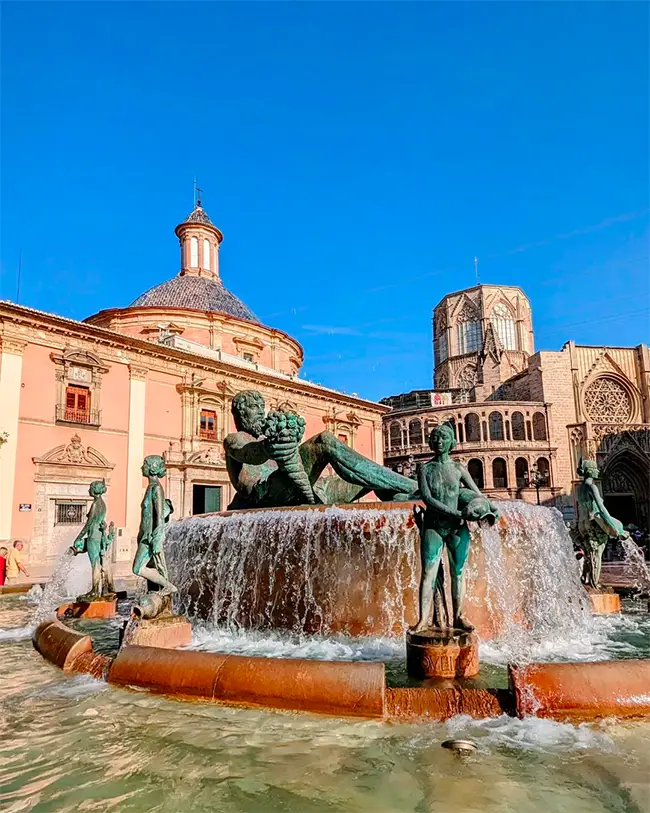
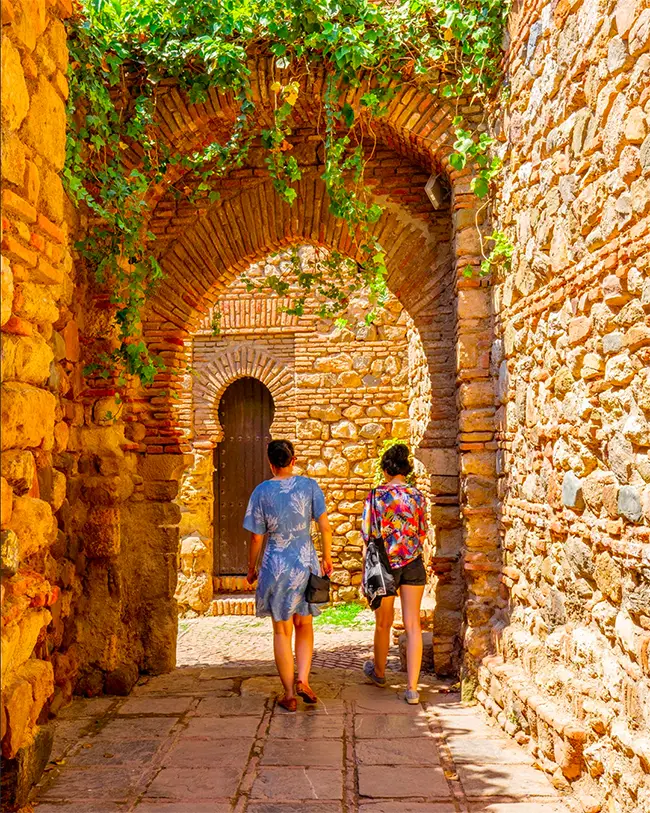
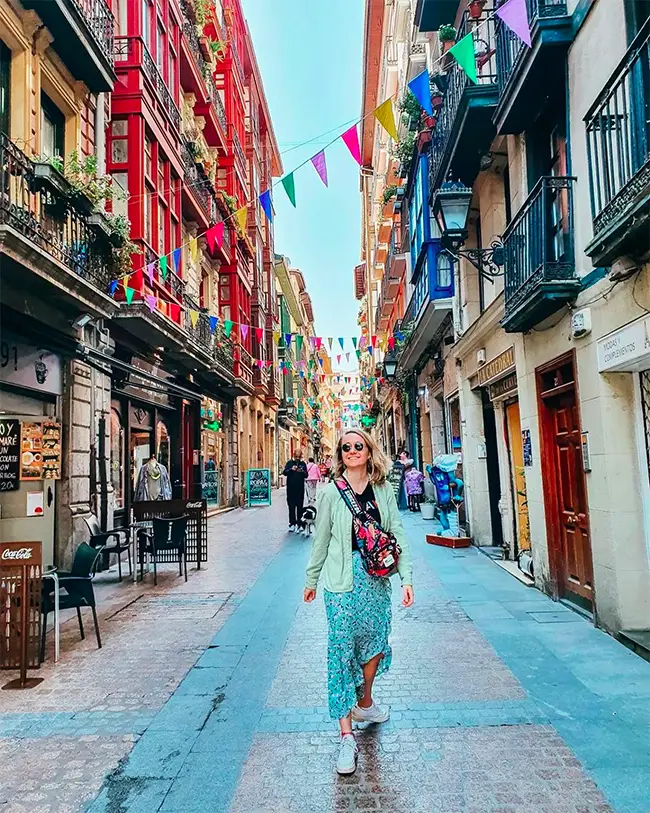
Top tips for travelling in Spain in June
Here are a few hints to help you make the most of your holiday:
- There’s often a school holiday in June. It’s generally early in the month but can change. Flights and accommodation will be more expensive during the half-term holiday, and the crowds will increase. So, if you’re travelling with kids, book early for the best deals and book your activities ahead of time to avoid entrance lines.
- If you’re travelling without children and can be flexible, book outside the holiday dates to avoid the half-term crowds and the price spike.
- The temperatures climb in Spain in June, so pack accordingly. Think lightweight dresses and shirts, sandals and swimwear, and thin jackets or sweaters for cooler evenings.
- It might not be peak summer yet, but the sun is still intense! Make sure to wear plenty of sunscreen, and remember to hydrate, especially if you’re doing a lot of walking around the cities.
So what do you think of our top 10 things to do in Spain in June?
Can you see yourself spending June road-tripping along the endless Spanish coastline, beach hopping, surfing, or hiking through dramatic scenery? Have you decided which of the many music festivals and traditional fiestas to attend? Do you want to throw a bucket of wine over your friends?
Well, what are you waiting for? Book your accommodation now to start planning your dream Spanish holiday in June.
What about next month? Here’s our guide to the top 10 things to do in Spain in July.
I am a huge fan of Spain and knew I would be before I’d ever set foot there. Any country where meals last for hours and afternoon naps are part of the culture is always going to be right up my street! And it did not disappoint. From beach holidays in the Canaries to working in the Balearics to road-tripping through the mainland and city breaks in the country’s urban hubs, I have returned again and again to Spain and will continue to do so for years to come.
